Plus: How Apparent’s global connections helped them hit the ground running at the start of the pandemic
Apparent was founded 12 years ago by Philip Smith. He focused on establishing and developing an agency focused on customer experience, giving them diverse capabilities.
The independent agency has grown significantly over the years, with 130 staff focusing on understanding the different aspects of a customer’s journey.
John Halpin, head of strategy and media, spoke to Mediaweek about its strong links with Silicon Valley, navigating the pandemic and following its client’s lead as business shifts.
Apparent and its diverse offering for clients
Halpin helped lead Apparent’s small media department when it was established in 2019.
“The whole focus of the business is trying to understand that customer journey. Where are the on-ramps, off-ramps, pain points and so on,” he said, noting they work hand-in-hand with clients on the media.
Apparent has diverse capabilities and a broad strategic offering for clients.
Halpin noted that half of the agency’s business comes from Silicon Valley in the US. He said the agency has worked with global marketing teams with big technology players such as Google, LinkedIn, VMware, and Snowplow.
“The function of the strategy team there is very different from working with local businesses. Whilst you’ll still have some of the same core strategic functions, it becomes a lot more campaign-focused than that global remit,” he said.
“We’re setting the product narrative and storytelling that can cascade down through regions and local markets.
“That then flows naturally into taking that to market into the media side. So then, we have our media team of about 17, who are much more focused on translating those strategies into execution from a channel perspective,” Halpin added.
Customer-first focus speciality
At the centre of Apparent’s specialisation is catering to their customer. But Halpin noted that their work often sees them do many other things.
For some clients, Apparent is a creative agency, digital partner, social media agency or media agency.
“We have some who are effectively a full-service for us. So, we have a broad range of services that we offer clients,” Halpin said.
“It is because of this customer-first focus that we look at what team we need to build around that client to deliver their customer needs. That can be the full suite or very specific, depending on the client’s needs,” he added.
Foundation clients and recent wins
Halpin noted that one of Apparent’s biggest foundation clients is Google, whom they have been working with for ten years, and a long-standing relationship with Nikon.
In terms of its media offering over the last three years, foundational to that has been Cricket Australia, a fully integrated client.
“We look after all of Cricket Australia’s media needs. Everything from their participation campaigns to get kids playing the sport through to all the international series to the BBL, helping to promote more than 60 matches a season to selling merchandise.
In recent client wins, Halpin noted that Apparent is working with tech companies such as Enablo, Asana, Wesley Mission charity and beauty brand Skin Physics.
Successfully navigating the pandemic
The pandemic was a tough time for many agencies. But for Apparent, Haplin said it was a busy period thanks to their global relationship and their clients in the technology space.
“When things first kicked off, they leaned on us very heavily. When everyone else was panicking, shutting the doors, and trying to make sure that they would be okay and ride the wave through, we were scrambling to find enough people to do the work.
“We were working with Google, VMware, and Cisco on all of their remote working product. In many cases, they had been trying to convince people to want it; suddenly, the whole world wanted it. So, we had to work very quickly to support them.
Halpin noted that they took the initiative to reassure staffers who had been with the agency for a long time would continue to work with them given the circumstances. He said: “In some cases, we took them on as full-time employees or extended contracts for six months, so they had some certainty about their situation.”
Halpin said that functionally as a business, Apparent worked well with the benefit of its long-term global relationships.
“We were able to use all of that infrastructure that we had in place to get the rest of the office up to speed quickly. We didn’t have any downswing in terms of our productivity is quite remarkable,” he said.
“Everyone was just able to pick up and go. As a business, that was quite remarkable because we’re talking about a big design team that had to move iMacs and get themselves set up at home. All of that worked smoothly. We were very lucky,” he added.
Halpin shared that the challenge for the agency at the time was building its media team remotely. He said: “The first two years of our relationship with Cricket Australia, we were going into planning the first season with the expectation that all the stadiums would be empty. Then very quickly, we found out that that wouldn’t be the case.
“At the same time, we were still having to plan for media where you didn’t know what market the games were going to take place in,” he added.
Halpin noted they had to be adaptable in its deals and media support for that season to ensure Apparent was present whenever needed, even at short notice.
Solidifying its relationships with clients
Looking at the agency’s outlook in the year ahead, Halpin noted that they had noticed a shift in its clients, which prompted change in the business.
“It’s the realisation we don’t necessarily need to be setting up offices and other markets to be able to service these clients. They’re recognising that this whole hybrid mode is something that’s going to be pretty standard going forward. If anything, it’s opening more doors for us,” he said.
Halpin also noted that Apparent wants more in-person time to reconnect with clients.
“It has been a couple of years since we’ve had the opportunity to do face-to-face conversations. That’s something that we’re looking to reignite,” he added.
“We’ve had people on the ground in Mountain View at the Google offices, who have spent more time there than the Google employees because they’ve been remote for two years as well,” he said.
The benefits of being part of the IMAA
Apparent joined the IMAA at the start of the year. Halpin said that he has been impressed with the growth of the industry body and what they do for independent agencies.
Halpin also highlighted the recent Digital Deep Dive held at the Sydney Sea Life Aquarium. He said: “It was great to have that opportunity to come together and hear from some of the big media suppliers collectively and get their different perspectives.”
Halpin also praised the IMAA’s educational programs for younger media professionals.
“I think it’ll be really interesting to see, building on what they’ve already achieved, how the IMA can become another force in the market to drive and accelerate change.”
“There’s a big opportunity in how we all come together to tackle issues like the carbon footprint of media, getting measured and addressed as a collective. It’s too small for anyone little agency to be tackling. Together our weight might help shift that situation,” he added.
Mediaweek article can be found here.




